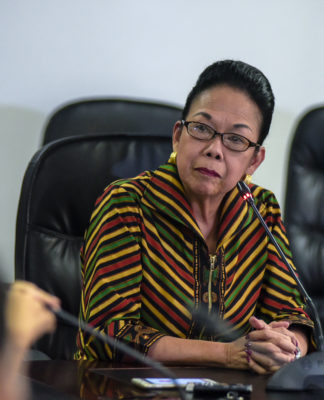TAKING the bold step forward to ease research and academic output from both students and faculty members, the learning resource units (LRU) of the Conservatory of Music, Faculty of Medicine and Surgery, and the College of Science have been instrumental in helping the University upgrade the quality of its instruction and research.
Equipped with state-of-the-art computers, electronic databases, and online scientific subscriptions, the Conservatory of Music LRU, the Hubert G. Wong LRU (Medicine) and the Akira R. Osato LRU (Science), provide a venue for students to foster a scholarly lifestyle in the university. However, since these sophisticated facilities serve only three schools, students from the other 11 colleges and faculties are left out.
According to Dr. Jonathan M. Asprer, Wong LRU director, the concept behind LRU is to help students cope with the increased requirement for personal productivity and self-directed learning.
At present, the Wong LRU has 183 computer units with online access to full-text medical literature databases from Ovid, ProQuest, and Elsevier Science Direct. Undergraduate medical students as well as post-graduate hospital trainees – interns, residents, and fellows, can use these facilities. Likewise, subscription to full text online medical literature databases has been expanded to include a larger number of peer-reviewed medical journal titles.
The Wong LRU also hosts a fully dynamic website, ustlru.com, very similar to the popular ustexchange.com, thus allowing massive interactivity among the UST medical community here and abroad.
On the other hand, facilities at the Music LRU are relatively less compared with Wong’s. According to Music Dean Dr. Raul Sunico, this is due to the fact that degree programs at the Conservatory of Music do not actually require electronic or computer knowledge.
Nevertheless, the Music LRU exists to provide supplementary resources for students to create and use music with the aid of modern technology. Sunico explains that fusing traditional instruments into electronic and multimedia is one way of teaching students to be more creative, effective, and efficient in applying their skills. Located on the first floor of the Albertus Magnus Building, the Music LRU is equipped with six computer units, each connected to a keyboard and a speaker. A music software enables students to compose, play, or modify their piece.
While Medicine and Music, both Centers of Excellence, has doubled efforts to improve their facilities, the Osato LRU has been performing below par. Established in 1997 with seven computer units with Internet access, it was intended to increase the output of student researches. But with more than 2,000 students enrolled in the college and with only six computer units functional at present, the LRU is inadequate. According to one of the LRU’s technicians who requested anonymity, the college apparently takes the facility for granted since the old computers have yet to be upgraded.
A number of students have also been complaining of the persistent unavailability of the unit especially during breaks.
“I only know it exists but I don’t know for what or for whom it (Osato LRU) is, ang liit-liit ‘nun!,” Marc Ramos, a Microbiology senior, said.
Other colleges also have plans of establishing their own LRU’s. Nursing will adopt the PBL method early next year and according to Dean Glenda Vargas, it is a must that they acquire such facility to allow students maximum use of educational materials. Meanwhile, Faculty of Pharmacy Dean Rosalinda Solevilla however, notes that one of the problems restricting their faculty is the lack of space to install the LRU.
Incidentally, one of the problems faced by majority of other colleges is the lack of a room that can house the LRU. According to College of Commerce Dean Amelia Halili, since computer classes with Internet are already available, other researches may be done at the Internet center in the library. Not only does it save room for the college, it also lessens the financial burden of building such modern and sophisticated units as LRUs.
Although the College of Fine Arts and Design does not have one, the Educational Technology Center (EdTech) has provided them with sophisticated multimedia rooms equipped with updated instructional software materials for drawing and image-designing.
Information technology resources are vital and must be incorporated into the traditional learning system to promote a more advanced learning process. With traditional paper-based study methods gradually becoming obsolete, LRU’s have set the pace for building a highly intellectual and research-focused academic climate.















